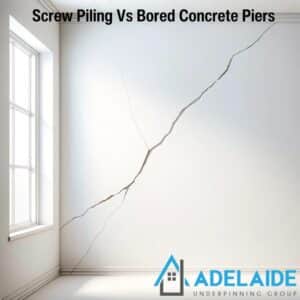Screw piling and bored concrete piers are two different foundation methods used in construction. In screw piling, builders install helical piles by inserting them directly into the ground, which is quick and efficient.
Meanwhile, bored concrete piers provide a more robust foundation but require more time to finish. They are particularly suited for use in heavy structures.
This blog will talk more about the differences between installing screw piles and bored concrete piers.
What Are Screw Piles?
Screw piles are unique deep foundation components crafted for embedding into the soil to uphold structures. Their notable characteristics encompass the following:
- Helical design: Outfitted with helical plates on their shaft, these piles effortlessly penetrate and secure themselves in the soil.
- Load-bearing ability: Screw piles are great at supporting substantial weights, making them suitable for diverse building ventures.
- Rapid installation: Their installation is swift, leading to minimal disturbance at the construction site.
- Adaptability: They are effective across a wide array of soil types and various construction scenarios.
- Environmental advantage: These piles present a smaller environmental footprint in comparison to conventional piling techniques.
- Cost-efficiency: Typically more budget-friendly due to reduced demands for labour and machinery.
What Are Bored Concrete Piers?
Bored concrete piers are substantial foundation elements created by boring into the earth and pouring concrete into these excavations. Their distinct qualities include the following:
- Deep-reaching foundation: They penetrate deeper layers of soil, offering enhanced stability.
- Heavy load capacity: Excellently equipped to bear the weight of large structures.
- Long-lasting nature: Resistant to shifts in soil and environmental factors, thus ensuring durability.
- Customisable dimensions: Both depth and width can be modified to suit the specific requirements of the site.
- Low vibration during installation: Their establishment causes minimal tremors, reducing the risk of harm to nearby structures.
- Versatility in soil types: Operate efficiently in various soil environments, especially in locations where soil consistency varies at different depths.

What is the Difference Between Screw Piles and Bored Concrete Piers?
The difference between screw piles and bored concrete piers revolves around their installation methods and adaptability to different soil types, an essential factor in basement foundation construction.
Screw piles are twisted into the soil, a technique that hastens the process and lessens site disturbance. They perform exceptionally well in softer ground and are renowned for their straightforward installation.
On the other hand, bored concrete piers involve drilling deep cavities and filling them with concrete. While this approach is more demanding in terms of labour and needs comprehensive site preparation, it is more appropriate for supporting weighty structures and suits a variety of soil environments.
When Should I Use Screw Piles?
You should use screw piles for softer soil conditions or when a rapid and less intrusive installation is required. They are favoured in areas sensitive to the environment and in projects where it’s essential to minimise disturbance to the ground.
When Should I Use Bored Concrete Piers?
You should use bored concrete piers for scenarios that demand deep foundations capable of supporting heavy loads. They are also perfect for construction endeavours that require enduring resistance to soil shifts.
